#Allen Holubar
Text
20 novembre … ricordiamo …
20 novembre... … ricordiamo …
#semprevivineiricordi #nomidaricordare #personaggiimportanti #perfettamentechic
2015: Keith Michell, Keith Joseph Michell, è stato un attore australiano. (n. 1926)
2008: June Vincent, attrice statunitense. La sua carriera per gli schermi cinematografici conta diverse partecipazioni. (n. 1920)
2003: Loris Azzaro, stilista italiano. Azzaro morì all’età di settant’anni e la direzione della compagnia passò in mano alla figlia Catherine. (n. 1933)
1989: Lynn Bari, nata Margaret…

View On WordPress
#20 novembre#Adrienne Morrison#Allen Holubar#Allen Joseph Holubar#Carlo Campanini#Helen Gardner#Helen Louise Gardner#June Vincent#Keith Michell#Loris Azzaro#Lynn Bari#Mabel Adrienne Morrison#Margaret Schuyler Fisher#Maria Jacobini#Morti 20 novembre#Sylvia Lopez#Tatjana Bernt
0 notes
Text
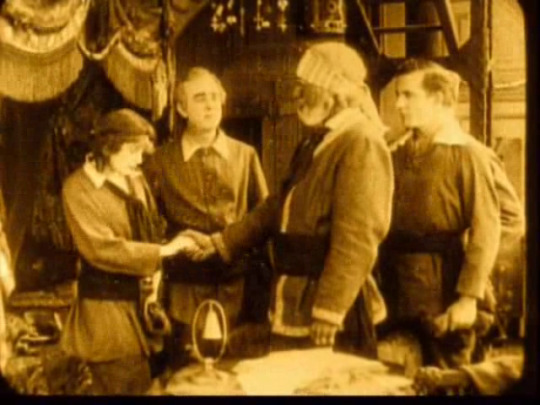
20,000 Leagues Under the Sea (1916)
dir.Stuart Paton
During the Civil War, reports of a sea monster attacking ships alarm the Navy. An investigation finds the monster is a submarine, the "Nautilus," commanded by vengeance-seeking Capt. Nemo (Allen Holubar), who was once an Indian prince. Years earlier, adventurer Charles Denver (William Welsh) caused the suicide of Nemo's wife and the disappearance of his daughter. Nemo tracks Denver to a distant island where, unknown to him, a wild native girl matching his daughter's description is also hiding.
#20#000 Leagues Under the Sea#1916#silent film#movie#early cinema#scifi#adventure#action#public domain#old movie#just watched#based on a novel#under the sea#sea life#jules verne#u boat#ship
4 notes
·
View notes
Text
Sci-Fi Saturday: Méliès and 20,000 Leagues Under the Sea
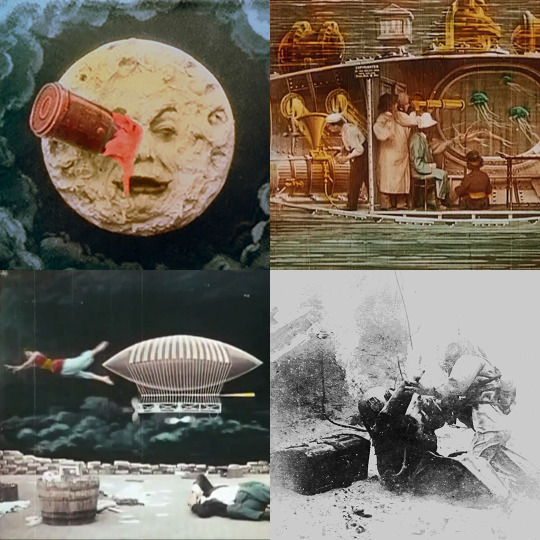
Week 1:
Film(s): A Trip to the Moon (Le voyage dans la lune, Dir. Georges Méliès, 1902, France)
The Impossible Voyage (Le Voyage à travers l'impossible, Dir. Georges Méliès, 1904, France)
The Inventor Crazybrains and His Wonderful Airship (Le dirigeable fantastique, Dir. Georges Méliès, 1906, France)
20,000 Leagues Under the Sea (Dir. Stuart Patton, 1916, USA)
Viewing Format: Méliès films via Criterion Channel; 20,00 Leagues via Kino Lorber Blu-Ray.
Date Watched: May 15, 2021
Rationale for Inclusion:
Internationally iconic, and widely associated with both silent cinema and science fiction, for its shot of a rocket piercing the eye of the moon, it went without saying that this chronological watch through of science fiction cinema would begin with A Trip to the Moon (Le voyage dans la lune, Dir. Georges Méliès, 1902, France).
But why watch just ONE Méliès film, especially when they range from a few minutes to 20 minutes in length? The Criterion Channel had Lobster Films' transfers of stencil colored prints available for viewing, so I also selected two other films that could be classified as science fiction, or at least "scientific romances": The Impossible Voyage (Le Voyage à travers l'impossible, Dir. Georges Méliès, 1904, France) and The Inventor Crazybrains and His Wonderful Airship (Le dirigeable fantastique, Dir. Georges Méliès, 1906, France).
In the case of 20,000 Leagues Under the Sea (Dir. Stuart Patton, 1916, USA), I either did not know the film existed, or had forgotten it existed, until I ran across a listing for it during a home video sale on Kino Lorber's website. I impulse bought a copy, curious to see what an adaptation of Jules Verne's submarine story made the year after D.W. Griffith's masterpiece of racism and cinematic technique The Birth of a Nation (1915, USA) would look like. I later learned that this version of 20,000 Leagues was the first motion picture to include underwater sequences, and was part of why the Universal Film Manufacturing Company transitioned into becoming the Universal Pictures Corporation. My reaction to the latter was, "What is it with Universal Studios being saved by movies about sea creatures?" (See also: "Jaws" (Dir. Steven Spielberg, 1975, USA).)
Reactions:
The Méliès Films
Foundational genre staples are all represented in these films:
Aliens
Space travel
Aquatic exploration
Mad scientists
The Impossible Voyage is a pseudo sequel to A Trip to the Moon, both in terms of content and Méliès building on the special effects and filmmaking techniques used in the latter. However, The Inventor Crazybrains and His Wonderful Airship probably should not have been included in our viewing as its content consists of a celestial hallucination, not an actual sci-fi narrative. It also was a let down compared to the other films.
The transfers of the films with their applied color processes were gorgeous. It adds to the mood, wonder, and iconic quality of Méliès' work.
20,000 Leagues Under the Sea
The overarching feeling after watching this film was that my partner and I really need to actually read Jules Verne's novels. Had we more familiarity with his works, we would have been able to identify 20,000 Leagues Under the Sea as an adaptation of Twenty Thousand Leagues Under the Sea as well as its sequel The Mysterious Island. Heck, we would have known that Twenty Thousand Leagues had a sequel! And in knowing about The Mysterious Island, which includes Captain Nemo's tragic backstory as being a dethroned Indian prince, it would have been less surprising to see Nemo depicted as East Asian.
Given how culturally acceptable racism was in 1916, I was shocked to see a mainstream American film where the tragic hero inventor was Asian and not a one dimensional stereotype or played by Sessue Hayakawa. Granted anything progressive about the character is undermined by the fact that actor Allen Holubar is a white man in brown face.
An entire essay or thesis could be (and probably has been) devoted to the history of how Captain Nemo's ethnicity has been depicted in various adaptations over the years. I would love to research or read that, honestly.
Anyway, narratively and stylistically 20,000 Leagues Under the Sea felt more modern than my partner and I expected for a film from 1916, and we were left wondering how much of it was from the source novels.
The underwater scenes were impressive and inventive given that the footage had to be captured via a complex set-up involving an observation pod. The footage was a spectacle in and of itself.
Overall a good film, and it paired well with the Méliès' films.
0 notes
Text
youtube
20,000 Leagues Under the Sea (1916) / Silent film by novel of Jules Verne / Allen Holubar, Jane Gail
0 notes
Photo

20,000 Leagues Under the Sea will be released on Blu-ray on July 28 via Kino Lorber Studio Classics. The 1916 film is based on Jules Verne's 1870 novel of the same name while also incorporating elements of his 1875 novel, The Mysterious Island.
The silent adventure movie is written and directed by Stuart Paton (Chinatown After Dark) and stars Allen Holubar and Jane Gail star. In 2016, the Library of Congress selected it to be added the National Film Registry.
20,000 Leagues Under the Sea has been newly restored in 4K by Universal Pictures. It's accompanied by a score composed by Orlando Perez Rosso. Special features are listed below.
Special features:
Audio commentary by film historian Anthony Slide
Allen Holubar stars as the domineering Captain Nemo, who rescues the passengers of an American naval vessel after ramming them with his ironclad, steampunk submarine, The Nautilus. The film also follows the adventures of a group of Civil War soldiers whose hot-air balloon crash-lands on an exotic island, where they encounter the untamed "Child of Nature" (Jane Gail).
#20000 leagues under the sea#jules verne#silent film#classic film#twenty thousand leagues under the sea#kino lorber#dvd#gift#kino lorber studio classics#jane gail#allen holubar#stuart paton#orlando perez rosso#universal pictures#national film registry
19 notes
·
View notes
Photo
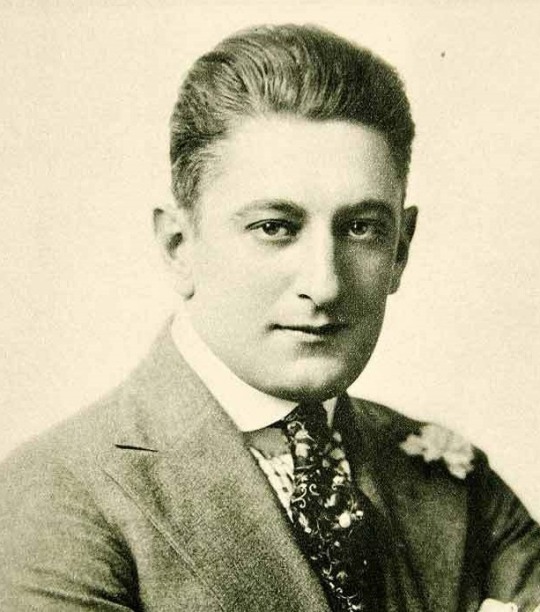
Allen Holubar was born in San Francisco's Castro district in 1888, and died at the age of 35 due to complications from gallstone surgery. Allen was one of the Associated Producers with Howard Hawks, Allan Dwan and Marshall Neilan who made 14 silent films from 1920 to 1923 with Holubar directing three of them. Allen directed a total of 36 films from a 1916 short to Slander the Woman (1923, a film starring his wife Dorothy Phillips. As an actor, Allen also had 38 credits, from a 1913 short to 1917.
1 note
·
View note
Video
Sebastian Sauvè for mientus
7 notes
·
View notes
Link
For just $3.99 Released on December 24, 1916: Jules Verne's timeless classic story comes to life in the first motion picture to use underwater photography. Genre: Adventure Duration: 2h 7min Director: Stuart Paton Actors: Dan Hanlon(Professor Aronnax),Edna Pendleton(Aronnax's daughter),Curtis Benton(Ned Land),Allen Holubar(Captain Nemo),Matt Moore(Lieutenant Bond),Jane Gail(a child of nature),Howard Crampton(Cyrus Harding),William Welsh(Charles Denver),Lois Alexander(Prince Daaker's daughter as a child),Wallis Clark(Pencroft),Joseph W. Girard(Major Cameron),Ole Jansen(unknown),Noble Johnson(unknown),Leviticus Jones(Neb),Martin Murphy(Herbert Brown) *** This item will be supplied on a quality disc and will be sent in a sleeve that is designed for posting CD's DVDs *** This item will be sent by 1st class post for quick delivery. Should you not receive your item within 12 working days of making payment, please contact me so we can solve this or any other questions. Note: All my products are either my own work, licensed to me directly or supplied to me under a GPL/GNU License. No Trademarks, copyrights or rules have been violated by this item. This product complies with rules on compilations, international media, and downloadable media. All items are supplied on CD or DVD.
0 notes
Photo



eBay Roundup
Twice a week, we round up the best of menswear on eBay so that our readers don’t have to. For an additional roundup, along with a list of each week’s best sales, subscribe to our Inside Track newsletter.
Today’s roundup has everything from vintage Belstaff leather motorcycle jackets to dressy Gaziano & Girling suede slip-ons. Also, shoutout to our pal RJ for finding this lovely Ettinger umbrella stand.
To dig up more menswear gems, try using our customized eBay search links. We’ve made them so you can quickly hone-in on high-end suits, good suits, high-quality shirts and fine footwear.
Suits, sport coats, and blazers
Navy Eidos sport coat, 40
Blue double windowpane Eidos sport coat, 42
Outerwear
Rubberized Cordings riding coat, 34 (fits like 36?)
Vintage red Holubar down vest, XS
Vintage Belstaff leather motorcycle jacket, 38 (pictured above)
Black wool Private White VC bomber, S
Navy quilted windowpane Mackintosh coat, 38
Brown leather Mandelli bomber, 38 and 40
Black Our Legacy MA-1 bomber, 40
Vintage Eddie Bauer down jacket, M
Green wool Valstarino bomber, 40
Green plaid Justo Gimeno coat, 40
Red Engineered Garments parka, M
Gray suede Mandelli bomber jacket, 42
Olive Man 1924 waxed cotton parka, L
Navy Buzz Rickson deck jacket, 42
Green quilted Cordings wool coat, L
Gray Donegal Billy Reid topcoat, XL
Gray Elka x Norse Projects raincoat, XL
Denim Nudie trucker jacket, XL
Black Oliver Spencer military coat, 44
Cordings brown herringbone tweed topcoat, 44
Brown corduroy Old Town work jacket, 46
Gray suede Mandelli bomber jacket, 46
Sweaters and knits
Tan Our Legacy crewneck sweater, 36
Charcoal Nonnative flecked sweater, XS
Striped SNS Herning Breton, S
Navy Howlin by Morrison cashmere-wool sweater, M
Beams patchwork indigo cardigan, L (prob fits like M)
SNS Herning Stark cardigan, L (fits like M) (pictured above)
Gray shawl collar Our Legacy cardigan, L
SNS Herning Stark cardigans, XL (1, 2) (fits like L) (pictured above)
Gray shawl collar G.R.P. pullover sweater, XL
Brown G.R.P. zip-up shawl collar cardigan, XL
Shirts and pants
Vintage Willie Nelson t-shirt, S
45rpm navy polo shirt, M
Gray plaid Stevenson Overall flannel shirt, M
Black leaf-print Our Legacy shirt, 42
Black John Severson Aloha shirt, XXL
Hartford Denim cinch back jeans, 32
Vintage Army fatigues, 34
Wallace & Barnes tan cargo pants, 34
Shoes
PF Flyers x Todd Snyder white sneakers, various sizes
Margiela hi tops GATs, 7
Viberg black cap toe service boots, 8
Vass shell cordovan perf toe oxfords, 8
Margiela black side zip boots, 8
John Lobb split toe bluchers, 8.5
Russell Moccasin chukkas, 8.5
Sulka fur lined suede chukkas, 9
Viberg suede ankle chukkas, 9.5
Gaziano & Girling suede slip-ons, 9.5 (pictured above)
Allen Edmonds black perf toe oxfords, 10
Margiela GATs, 10 (1, 2)
Buttero suede Chelsea boots, 10.5
Margaret Howell x Solovair black boots, 11
George Cleverley shortwings, 11
Viberg black bluchers, 11
Ties
Navy striped Drake's grenadine
Brown striped Calabrese tie
Two Tom Ford knitted ties in pink and brown
Bags, briefcases, and wallets
Black nylon Porter backpacks (1, 2, 3)
Two tan leather Tramontano travel bags
Black leather Ally Capellino messenger style bag
Brown leather JW Hulme tote bag
Misc.
Il Bisonte leather folios
Vintage boot shaped pendant
Women's Cable Car Clothiers chunky shawl collar cardigan, M
Charcoal suede Maison Fabre shearling gloves, 8 and 8.5
Silver Asprey tray
Navy Drake's animal motif scarf
Asprey silver cigarette case
Leather envelope for your ... envelopes?
Ben Silver dress belts, various sizes
Han Kjobenhaven sunglasses
Red Ettinger umbrella stand
If you want access to an extra roundup every week, exclusive to members, join Put This On's Inside Track for just five bucks a month.
8 notes
·
View notes
Text
20 novembre … ricordiamo …
20 novembre … ricordiamo …
#semprevivineiricordi #nomidaricordare #personaggiimportanti #perfettamentechic #felicementechic #lynda
2015: Keith Michell, Keith Joseph Michell, è stato un attore australiano. (n. 1926)
2008: June Vincent, attrice statunitense. La sua carriera per gli schermi cinematografici conta diverse partecipazioni. (n. 1920)
2003: Loris Azzaro, stilista italiano. Azzaro morì all’età di settant’anni e la direzione della compagnia passò in mano alla figlia Catherine. (n. 1933)
1989: Lynn Bari, nata Margaret…

View On WordPress
#20 novembre#Adrienne Morrison#Allen Holubar#Allen Joseph Holubar#Carlo Campanini#Helen Gardner#Helen Louise Gardner#June Vincent#Keith Michell#Loris Azzaro#Lynn Bari#Mabel Adrienne Morrison#Margaret Schuyler Fisher#Maria Jacobini#Morti 20 novembre#Sylvia Lopez#Tatjana Bernt
0 notes
Text
Jules Verne’s legendary nautical science fiction tale was adapted in grand style by Universal, complete with underwater photography and billed as the “First Submarine Photoplay Ever Filmed” by the proud studio.
I will also be reviewing Disney’s 1954 version. Click here to skip to the talkie.
Home Media Availability: Released on DVD.
Take an ocean voyage, they said. It will relax you, they said.
Jules Verne is one of the fathers of science fiction and 20,000 Leagues Under the Sea is one of his most famous works. It has the rare distinction of being a science fiction story that has been downgraded to an adventure/drama due to the fact that many of the technological wonders that Verne included in his tale later became commonplace. But don’t forget that this was cutting edge technology in 1869.
A chest tied to barrels! Cutting edge, I tell you!
(By the way, some people have described this book as a precursor to the steampunk genre. This is as ridiculous as saying that The Cabinet of Dr. Caligari was a precursor to Tim Burton’s career. It would be better to say that 20,000 Leagues Under the Sea influenced and inspired the steampunk genre. End pedantic rant.)
With any book this famous, essays and dissections abound. Since I have no wish to retread old ground and since my primary interest is cinematic, I will keep the book-to-film comparisons small and manageable, focusing instead on how the story works on the screen. Both 20,000 Leagues and its sequel, The Mysterious Island, had been filmed before this 1916 production and they would be filmed again and again and again. Let’s see how the 1916 motion picture measures up to the cinematic legacy of this famous story.
Our first hint that something big is afoot comes during the opening credits. Pioneering underwater photographers George and Ernest Williamson are given special billing right after the main title. The brothers, we are breathlessly promised, have alone solved the secret of under-the-ocean photography. I don’t know about you, but when something is given such a hard sell, I am inclined to sit back and demand to see the goods. The ball was in the Williamson’s court.
Of course, 20,000 Leagues Under the Sea needs more than just ocean photography and we are soon shown our main characters. Professor Aronnax (Dan Hanlon) lives with his unnamed daughter (Edna Pendleton). In the book, Aronnax had no daughter and his sidekick was his servant, Conseil, who just sort of lingers in the background in this adaptation. He has been replaced by the daughter, who is such an important character that the filmmakers couldn’t be bothered to give her a name. Hoo boy. I’ll just refer to her as Aronnaxette.
“Oh, daddy, I love you so!”
“Um, who are you again?”
Aronnax accepts the US government’s offer to try to track down a sea monster that has been destroying ships. He and his daughter board the Abraham Lincoln and make the acquaintance of harpooner Ned Land (Curtis Benton). Ned and Aronnaxette hit it off and it looks like love is in the air but don’t worry, absolutely nothing comes of it.
I’m not sure how I would feel about my daughter dating a harpoonist either.
Now it’s time to meet the character we have all been waiting for: Captain Nemo. He is played by Allen Holubar, who is most famous today for directing (or, rather, misdirecting) The Heart of Humanity with a little help from Erich von Stroheim. Holubar’s direction was laughable in spots, such as calling on his leading lady/wife talk to squirrels, kiss socks and having a major character stuff bread in his pants. I am sorry to say that Holubar’s talents as an actor match his skills as a director.
Do I need more makeup? Darn it, I think I do.
Strike One: Captain Nemo is under a mountain of blackface makeup with white eyeliner. In the silent era, actor frequently applied their own makeup so I am comfortable blaming Holubar for his character’s ridiculous appearance. Strike Two: Holubar employs woe-is-me stage mannerisms that verge into caricature. Strike Three: No smolder. Captain Nemo is a dark, dangerous character, intelligent and murderous. A certain intensity is called for and Holubar simply cannot muster it.
But the introduction of Captain Nemo also means the introduction of the Nautilus, his submarine. I am happy to report that every word written about the Williamson brothers and their underwater special effects and photography is true. Simply put, the Nautilus is stunning. It’s sleek, it’s fast and it cuts through the water with suitable menace. The special effects are a century old and they are holding up. Color me impressed.
Of course, the Nautilus and the Abraham Lincoln meet on the high seas. The sailing ship puts up a gallant fight but is no match for the superior technology. Aronnax, Aronnaxette and Ned are all thrown overboard and end up being rescued by the Nautilus. They are locked up and Captain Nemo announces they can never, ever leave. So there.
Meanwhile in a completely different movie…
So then Lieutenant Bond and his four Army scouts escape in their balloon whilst the enemy shoots and them and… Confused? That’s not surprising. The filmmakers have decided that one Verne novel is not enough and have decided to throw 20,000 Leagues Under the Sea’s sequel, The Mysterious Island, into the mix. So with no introduction at all, we are supposed to suddenly be following the adventures of Lt. Bond (played by Matt Moore, by the way) and company. Sigh.
This is literally the only intro we get.
They land on an island, a mysterious island (get it? get it?) that is occupied by, I kid you not, the Child of Nature (Jane Gail). She’s covered in really shoddy dark makeup and wears leopard skins and she’s just so in touch with nature that she is moved to dance. And by “dance” I mean she awkwardly lurches and twitches about the beach. The Child of Nature trope was pretty common in silent film with D.W. Griffith being a noted devotee. Leni Riefenstahl indulged in a stint of this characterization as well, most notably in The Holy Mountain. (Please note that I am pretty much good with anything that makes Leni look ridiculous.)
Uh oh, someone forgot her pills this morning.
Anyway, Captain Nemo seems to be less of a half-mad genius bent on destructive vengeance and more of an ocean-based philanthropist. He sends a basket of goodies to the stranded men and even saves one of the soldiers who was separated from the rest. The lone African-American in the scouting team is the one who gets the frying pan and has to cook and serve the others. Sigh. (I’m doing a lot of that in this picture.)
But then we get more underwater stuff! Yay! It truly is the saving grace of the picture. Aronnax and company have all been reduced to a hive mind and they think Nemo is swell. The guys get to go playing under the waves while Aronnaxette stays behind and watches. Sigh. Again. But the underwater scenes are just wonderful! Feast your eyes:
The Child of Nature has fallen for Matt Moore (forgot his character’s name within a few paragraphs, can’t be bothered to look it up) but she has a mysterious past and you will never guess who her daddy is! (Yes. Yes, you will.) Will our divergent plots ever come together? Find out in 20,000 Leagues Under the Sea!
So, how does it hold up? As an adaptation, it’s pretty poor and none of the performers acquit themselves particularly well. Holubar’s central role makes him particularly deserving of score but Jane Gail is pretty bad too, always twitching and making funny faces at the camera. Such mugging leads me to wonder if she was a family friend of Universal boss Carl Laemmle. (The Mary Philbin casting technique.)
She always gets like this if someone gives her Mountain Dew.
Further, Ned Land is reduced to a footnote and Conseil barely registers at all. In their rush to expand the cast, the screenwriters forgot about the main characters of the original story. (The AFI catalog credits the adaptation to the film’s director, Stuart Paton, who seems to have spent much of his career at Universal without much distinction.) Any adaptation that has the chutzpah to include a title card like this deserves a certain amount of ridicule:
However, none of this matters once the film leaves dry land and dives under the waves. The spectacular underwater cinematography and the impressive Nautilus are more than enough to make up for the other flaws of the picture. This production is epic and every inch looks expensive. I was particularly surprised by the elaborate sets of the Indian flashbacks in the film’s finale. The Indian sequences takes up only a few minutes of the film. I wonder if it made use of other sets Universal had lying around. A bit of creative redressing?
Ooo, expensive!
So, is this picture worth seeing? If you are at all interested in the history of cinematic special effects, it definitely is. But as entertainment… Well, it’s fun enough but the flaws are pretty distracting and the performances leave much to be desired. Still, I believe anyone interested in silent cinema should see it at least once.
Where can I see it?
While there are several versions in print, I recommend the out-of-print Image edition. It features a delightful score by Alexander Rannie and Brian Benison, which makes the picture considerably more enjoyable.
Ladies and gentlemen, we are about to pit two Jules Verne adaptations against each other! The 1916 epic will be challenged by the 1954 Disney classic! Which film will emerge the winner?
The Talkie Challenger: 20,000 Leagues Under the Sea (1954)
Home Media Availability: Released on DVD.
Mighty! And in Technicolor!
I have been looking forward to this review as I do not believe I have seen this film since I was seven years old or thereabouts. As a child of the 80s, all my friends had stacks of Disney films on VHS in those fat white plastic cases and 20,000 Leagues Under the Sea was in many of those collections. Truth be told, I didn’t care much for it. I loved that Peter Lorre had a role in it, of course, but so much of it was just old guys talking, Kirk Douglas being manic and James Mason being scary. (I found beards terrifying as a child, it’s a wonder I tolerated Commander Riker.)
Of course, seven-year-olds are not noted to be the most astute film critics and so I was interested to see if the film would appeal to the adult me.
Not my idea of fun in the second grade.
Long story short, yes it did. The Disney production’s high production values and huge budget make for a beautiful film, of course, but the real hero of the production is the casting director. While there are minor characters in the background, this is basically a four-character story and all four were perfectly cast. Paul Lucas, Peter Lorre, Kirk Douglas and James Mason all inhabit their roles and illustrate different flavors of humanity. Lucas is a trusting intellectual with his head in the clouds, Douglas is a hedonist who solves most of his problems with either money or fists, Lorre is probably the most normal and would prefer a less colorful life. Mason’s take on Captain Nemo is iconic: dark and ruthless with a few tattered patches of humanity poking out now and again.
Nemo and Aronnax survey Rura Penthe (Obscure Star Trek joke: Were they there to rescue Captain Kirk?)
The set piece of the film is, of course, the attack of the giant squid and it is spectacular. The squid is swift, strong and hungry. The shots of the Nautilus crew trying to beat it off their hull are as good as anything in modern action films and Ned Land’s impulsive rescue of Nemo is grade-A heroism.
The film is not perfect by any means. It has major pacing issues and stops dead in certain spots. The idea of Nemo’s source of power being nuclear is just plain trying too hard. Cannibals? Seriously? They kept the cannibals? However, these issues do not take away from the fact that this is a first-rate production and what works does so very, very well.
I didn’t even mind the musical numbers.
On a side note, I have heard some critics complaining about the casting of Mason as Nemo when the character was meant to be from India. Goodness know I am no fan of whitewashing roles but I think critics should really study up before making this charge against the 1954 film.
Nemo’s past and motives were kept murky in the novel, far murkier than in just about any film adaptation. Verne’s sequel, The Mysterious Island, revealed that Nemo haled from Britain’s Indian holdings and he carried a grudge against that empire. However, this was a change that Verne was persuaded to make by his publisher. Originally, Verne wanted to make Nemo a Polish nobleman who had been involved in the then-recent uprising against the Russians and Russia was the nation against which he held a grudge. Given the longstanding cultural affinity and diplomatic connections between France and Russia, the British Empire was a much more suitable villain for French readers.
Nemo looking rather Polish in an original illustration.
Ironically enough, when the 1954 film entered production, the Russians would have been the fashionable villains of the time and the British would be the ally that the producers would hesitate to anger. In the end, the Disney production follows the novel’s lead and plays it coy; the enemy nation is never named.
For what it’s worth, the novel’s description of Nemo fits Mason pretty well:
“I made out his prevailing qualities directly: self-confidence—because his head was well set on his shoulders, and his black eyes looked around with cold assurance; calmness—for his skin, rather pale, showed his coolness of blood; energy—evinced by the rapid contraction of his lofty brows; and courage—because his deep breathing denoted great power of lungs.”
Mason’s Nemo a man of mystery.
Using on 20,000 Leagues Under the Sea as a source, screenwriters would really have no idea as to where Nemo was born and that was clearly Verne’s intent. And since Nemo’s nationality was chosen to satisfying the political whims of a French publisher (and due to the fact that India and Poland both happened to have uprisings against colonial powers in the mid-1800s), well, I’m not particularly bothered with the casting of Mason. Polish or Indian backgrounds work equally well if we take into account author intent and I think we already have our hands full with the cannibal scene.
Now for a closer look!
Now that that’s out of the way, it’s decision time! Let’s compare the components of the 1954 picture and the 1916 to determine the winner.
Nautilus: The 1916 film features better submarine vs. ship combat. The battle between the Abraham Lincoln and the Nautilus is fast-paced and quickly establishes that no matter was the Lincoln’s crew does, they are outmatched by superior technology. The 1916 Nautilus has a sleek, functional design and it speeds through the water with disturbing efficiency. While the 1954 film’s ramming scenes are effective and the undersea images of the defeated ships are eerie and memorable, the ship’s more baroque design is not quite as elegant. I’m going to have to give this one to the silent film.
Octopus/Squid Combat: I think we can settle this with two screen caps.
1916
1954
1954? 1954.
Underwater Photography: Both films are absolutely astonishing and their big budgets show but I am going to have to give this one to the 1916 film. It was made with far more primitive equipment but it still managed to capture the eerie beauty of the undersea world. The photography is truly a work of art.
But the 1954 version’s underwater scenes are pretty darn good.
Supporting Cast: The 1916 film suffers from a cast overload. First, we have the addition of a daughter for Aronnax and then we get the Child of Nature on the Mysterious Island, plus the crew of the military balloon, plus Denver, the man who betrayed Nemo back in the day. As a result, everyone who is not outrageously costumed is lost in the shuffle.
The 1954 film, on the other hand, creates an interesting conflict with the main trio. Paul Lucas’s idealistic Aronnax is an extreme intellectual, Kirk Douglas’s pragmatic Ned Land is all about the physical impulses of the moment and Peter Lorre’s Conseil vacillates between the two with his loyalty to his mentor conflicting with his admiration for Ned’s moxie. The film wisely leaves Nemo’s crew a cypher as the smaller cast allows for more depth in character development. We get a few colorful characters passing through but once the Nautilus shows up, it’s all about the trio and Captain Nemo.
Ned and Conseil atop the Nautilus.
Another thing: I am all for adding roles for women in films but the 1916 film and most of the versions made since have all felt the need to add daughters for Nemo, Aronnax or both. It’s clearly meant to add some romance and girl power to the story but the women are invariably appendages of either their fathers or designated love interests. Yawn. Call me when actual characters who happen to be women are involved. If you can’t do that, follow the Disney film’s lead and just stick to the book. Sigh.
With its leaner character roster and its smart casting, the 1954 version easily wins.
My, my! Someone is intense today!
Captain Nemo: There’s no real competition here. James Mason was always at his best when he was able to engage his dark side and few 19th century adventure characters were darker and more mysterious than Captain Nemo. Allen Holubar’s theatrics are no match for Mason’s dark, smoldering performance. Holubar’s Nemo is a goofy eccentric while Mason’s is a terrifying force for vengeance. You tell me which actor you would rather see.
Answer: him
Further, the 1954 film does a far better job of selling Nemo’s tragic story. While the 1916 film has elaborate flashback sequences that show Nemo’s wife being killed and his daughter kidnapped, they cannot compete with Mason’s simple declaration that his wife and son were tortured to death. Less is indeed more.
And the winner is…
The Talkie!
The 1954 picture hits its mark
While the 1916 film has impressive underwater sequences, its plot and characters are hopelessly muddled. The 1954 picture keeps it simple and only uses the main characters from the original Verne novel. While it is not a perfect film, it deserves its status as a classic live-action adventure.
20,000 Leagues Under the Sea (1916) A Silent Film Review Jules Verne’s legendary nautical science fiction tale was adapted in grand style by Universal, complete with underwater photography and billed as the “First Submarine Photoplay Ever Filmed” by the proud studio.
#1916#20#20000 Leagues Under the Sea#Allen Holubar#Dan Hanlon#Jane Gail#Matt Moore#Science Fiction#Twenty-Thousand Leagues Under the Sea
3 notes
·
View notes
Photo

Slander the Woman (1923) was the last film from Associated Producers, Howard Hawks’ venture into film financing and production with Allen Dwan, Marshal Neilan and Allen Holubar.
Todd McCarthy in The Grey Fox of Hollywood said of the film “ It was, from all accounts, a real dog, an ignominious end to a company that started out strongly but had, at best, an erratic artistic and commercial track record.”
1 note
·
View note
Text
Howard Hawks' early career
Howard Hawks’ early career
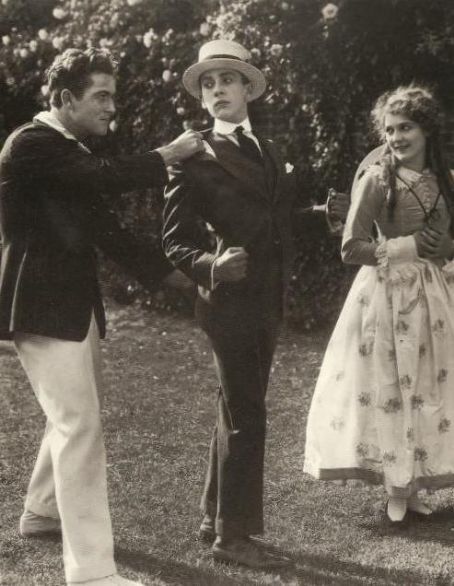
Director Marshall Neilan with Mary Pickford and William Scott on the set of Amarilly of Clothesline Alley (1918).
Marshall would soon form an indepedent production company with Howard Hawks, Allan Dwan and Allen Holubar. They produced 14 films from 1920 to 1923.
“The Grey Fox of Hollywood” says “After The Little Princess. Hawks worked on one more Neilan feature Amarilly of Clothersline Alley," but he doesn't provide any further detail.
1 note
·
View note
Photo
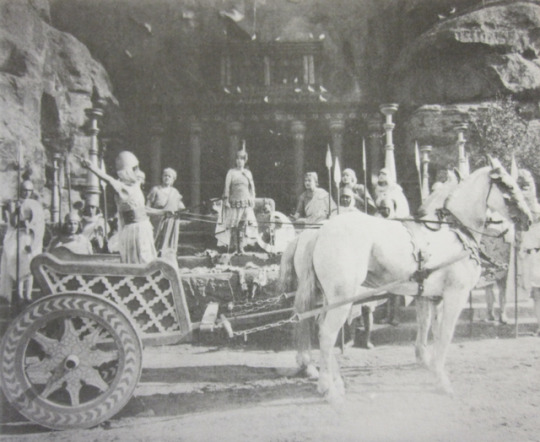
Man Woman Marriage (1921) was Allen Holubar's first directorial effort for his Associated Producers that included Howard Hawks. Allen’s wife, Dorothy Phillips, was the star.
Allen’s career was cut short when he passed away in 1923, at the age of 35 , from complications after surgery for gallstones.
0 notes
Text
Howard Hawks' early career
Howard Hawks’ early career

Slander the Woman (1923) was the last film from Associated Producers, Howard Hawks’ venture into film financing and production with Allen Dwan, Marshal Neilan and Allen Holubar.
Todd McCarthy in The Grey Fox of Hollywood said of the film “ It was, from all accounts, a real dog, an ignominious end to a company that started out strongly but had, at best, an erratic artistic and commercial track record.
0 notes
Photo
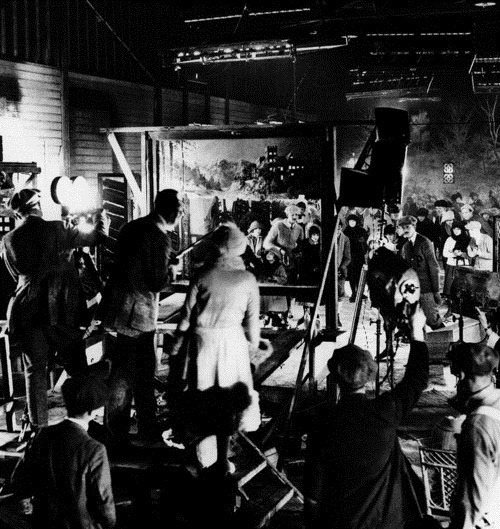
Howard Hawks’ early career Setting up a complicated shot on the set of Slander the Woman (1923). Directed by Allen Holubar, this was his third film for Associated Producers, all starring his wife Dorothy Phillips. It was the independent production company’s final film. Howard Hawks, as one of the producers, was now considering a career as a director. He would begin directing in 1926.
0 notes